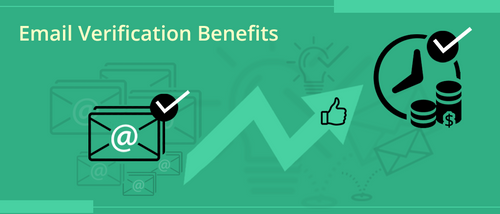In today's digital age, effective communication and data security are paramount. Email verification notices serve as an essential tool to achieve these goals. This comprehensive guide will take you on a journey through the world of email verification notices, covering their significance, various applications, best practices, and how they can elevate your communication strategies and ensure data security.
The Significance of Email Verification Notices
Before we dive into the specifics of email verification notices, let's understand why they hold such importance in the realm of communication and security.
1. Account Security
Email verification notices play a critical role in safeguarding user accounts. They are often used to confirm account changes, password resets, and login attempts, helping users detect unauthorized access.
2. Transactional Integrity
In the world of e-commerce and online banking, email verification notices are vital for confirming transactions, orders, and financial activities, ensuring their accuracy and legitimacy.
3. Regulatory Compliance
Email verification notices are often a requirement to comply with data protection regulations, such as GDPR or HIPAA, which mandate secure and verifiable communications.
4. User Engagement
For businesses and organizations, email verification notices enhance user engagement by confirming subscriptions, registrations, and interactions, improving the overall user experience.
Now, let's explore the various applications and benefits of email verification notices.
Applications and Benefits of Email Verification Notices
Email verification notices find applications across various industries and scenarios, each with its unique benefits:
1. Account Verification
Email verification notices are commonly used during account registration to confirm the validity of the provided email address. This helps prevent fake or unauthorized account creations.
2. Password Reset
When users request a password reset, email verification notices are sent to their registered email address. This ensures that the request is legitimate and helps protect accounts from unauthorized access.
3. Transaction Confirmation
In the realm of e-commerce and finance, email verification notices confirm transactions, orders, and financial activities, providing users with peace of mind and transparency.
4. Subscription Confirmation
Email verification notices play a vital role in confirming user subscriptions to newsletters, updates, and marketing communications. This ensures that users receive the content they requested.
5. Account Activity Alerts
For security-conscious users, email verification notices can be used to send account activity alerts, such as login attempts or changes to account settings, allowing users to take immediate action in case of suspicious activity.
Best Practices for Email Verification Notices
To ensure the effectiveness of email verification notices and maximize their benefits, consider the following best practices:
1. Clear and Informative Content
Ensure that the content of the email verification notices is clear and informative. Include concise instructions and relevant details to help users understand the purpose of the notice.
2. User-Friendly Design
Design the email notices to be user-friendly, with a clean layout and easy-to-understand visuals. Avoid clutter and distractions.
3. Timely Delivery
Deliver email verification notices promptly. Users should receive these notices in a timely manner to take necessary actions.
4. Secure Links and Verification Codes
Use secure methods, such as unique verification links or codes, to confirm user actions. Ensure that these links and codes are generated securely to prevent fraud.
5. Opt-Out Options
Include an option for users to opt out of receiving certain types of email verification notices. Respect user preferences regarding communication.
Common Questions about Email Verification Notices
Q1: Are email verification notices essential for all types of online services?
Email verification notices are essential for online services that handle user accounts, financial transactions, or sensitive data. They enhance security and user confidence.
Q2: How can I prevent email verification notices from going to the spam folder?
To prevent email verification notices from ending up in the spam folder, ensure that your emails follow best practices, use proper authentication methods, and monitor sender reputation.
Q3: Can email verification notices be customized for branding purposes?
Yes, email verification notices can be customized to reflect your brand's identity and maintain a consistent look and feel across communications.
Q4: What are some common security measures for email verification notices?
Common security measures include using HTTPS for links, implementing two-factor authentication for sensitive actions, and encrypting user data.
Q5: How can businesses use email verification notices for marketing purposes?
Businesses can use email verification notices to confirm newsletter subscriptions, ensuring that users receive the content they requested. This can be a valuable marketing tool.
Q6: Are there regulations that govern the use of email verification notices?
Yes, regulations such as GDPR and CAN-SPAM Act may apply to the use of email verification notices, depending on the nature of the communication and the user's location.
Conclusion
Email verification notices are a powerful tool for enhancing communication, security, and compliance across various industries and scenarios. By understanding their significance, implementing best practices, and staying informed about regulatory requirements, you can harness the full potential of email verification notices to elevate your communication strategies and safeguard data. Whether you're an individual user or a business owner, mastering email verification notices is a crucial step toward ensuring secure and reliable communication in today's digital landscape.



